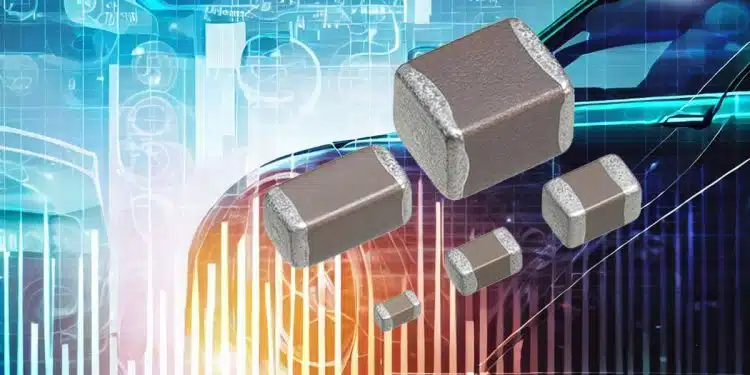This blog written by Jennifer Lewis, published TTI Market Eye Insights, provides an overview of MLCC ceramic capacitors market demand and key factors behind its forecasted fast growth.
Today, every industry demands higher volumes of data and faster speeds to meet the growing complexity of electronic devices.
In the middle of this increased demand for higher performance components is the multilayer ceramic capacitor (MLCC) market, which, according to Mordor Intelligence estimates, will swell from $13.2 billion in 2023 to $17.7 billion in 2028, growing at a CAGR of 6.03 percent.
The Global and China Multi-Layer Ceramic Capacitor (MLCC) Industry Report (2019 to 2025) expects MLCC supply to reach 6.1T pieces/year by 2025. That is six times higher than today’s production levels. The future could not be brighter for MLCCs.
What is causing the surge? Innovation in the automotive industry, 5G technology, IoT, AI and the cloud are key factors. MLCCs’ unique qualities also help. Accounting for more than 50 percent of the capacitor market, MLCCs are smaller in size and lighter in weight than most capacitors and are better able to meet higher voltage, higher frequency, higher temperature and higher power demands. They are also less expensive.
A few obstacles stand in the way of meeting increased demands. Inventory shortages aren’t what they were in previous years, but MLCCs in certain categories are still experiencing constraints and extended lead time, particularly in the high capacitance values, large case sizes and automotive grade arenas. Many manufacturers have production in China, so tariffs are still a reality coming out of these factories to the U.S.
Automotive is Leading the Pack
A significant factor pushing MLCC demand is the electrification of transportation, particularly in electric vehicles (EVs). Traditional internal combustion engine (ICE) vehicles require a sizeable number of MLCCs for infotainment, safety systems (antilock braking and advanced driver assistance systems), powertrain, lighting and climate control applications.
The largest demand for MLCCs lies within the EV and hybrid markets, where more sophisticated electrification is required. Beyond the systems ICEs utilize, MLCCs are needed for EV battery management, on board chargers and charging infrastructure. The number of MLCCs needed is staggering: a standard car can contain up to 10,000 units and a premium vehicle uses up to 30,000.
Telecommunications, 5G and More
In telecommunications, the number of MLCCs in high-end mobile phones has expanded from roughly 70 units in the 4G era to more than 1,000 units today, and by 2030, the number of MLCCs in 5G base stations is expected to double. MLCCs are being heavily used in computers, LED lighting, televisions and consumer appliances.
The emergence of IoT, AI, cloud and digitalization—which all require MLCCs—has also led manufacturers to keep an eye on the MLCC market. Other industries that rely heavily on MLCCs include industrial automation, military and aerospace and healthcare.
The Necessity of a Reliable Partner
Even if new car sales decrease, the growing MLCC demands of the automotive industry—with those in other markets—will still significantly expand the volume of MLCCs needed worldwide. Designers need to know they can turn to a reliable partner who can deliver quality parts when they need them.
































